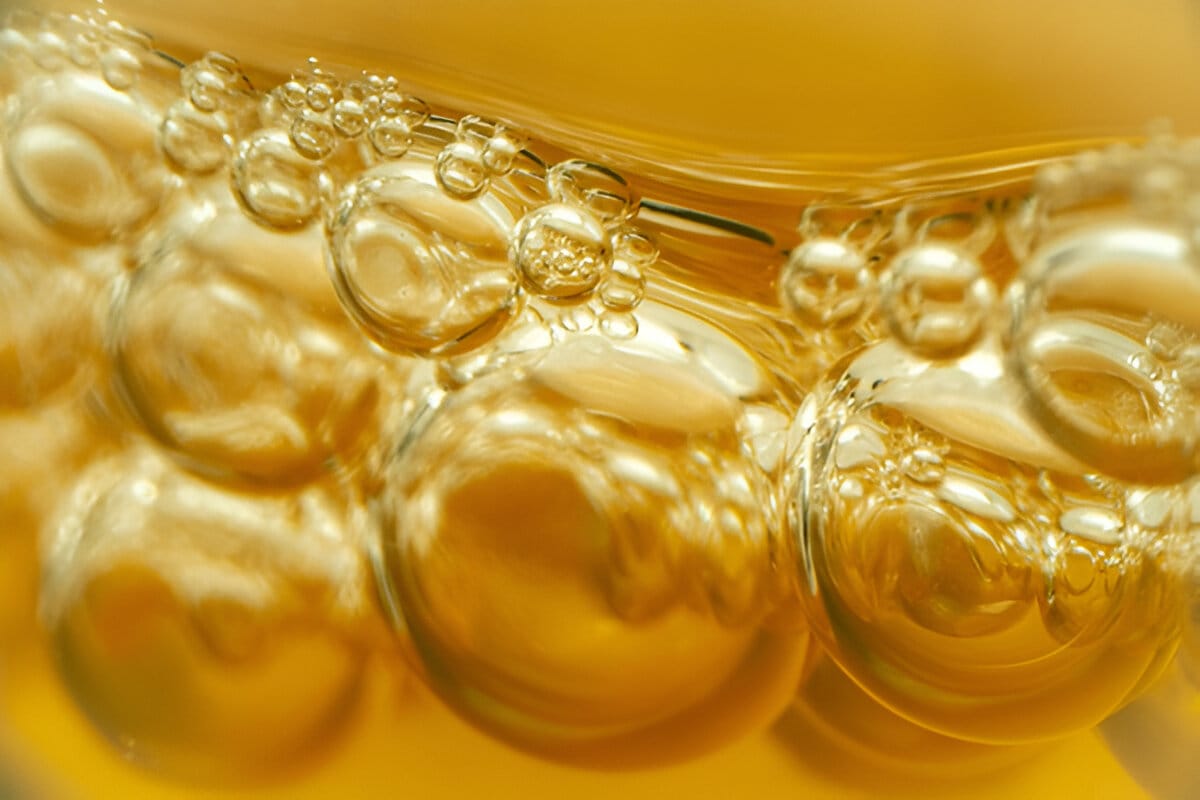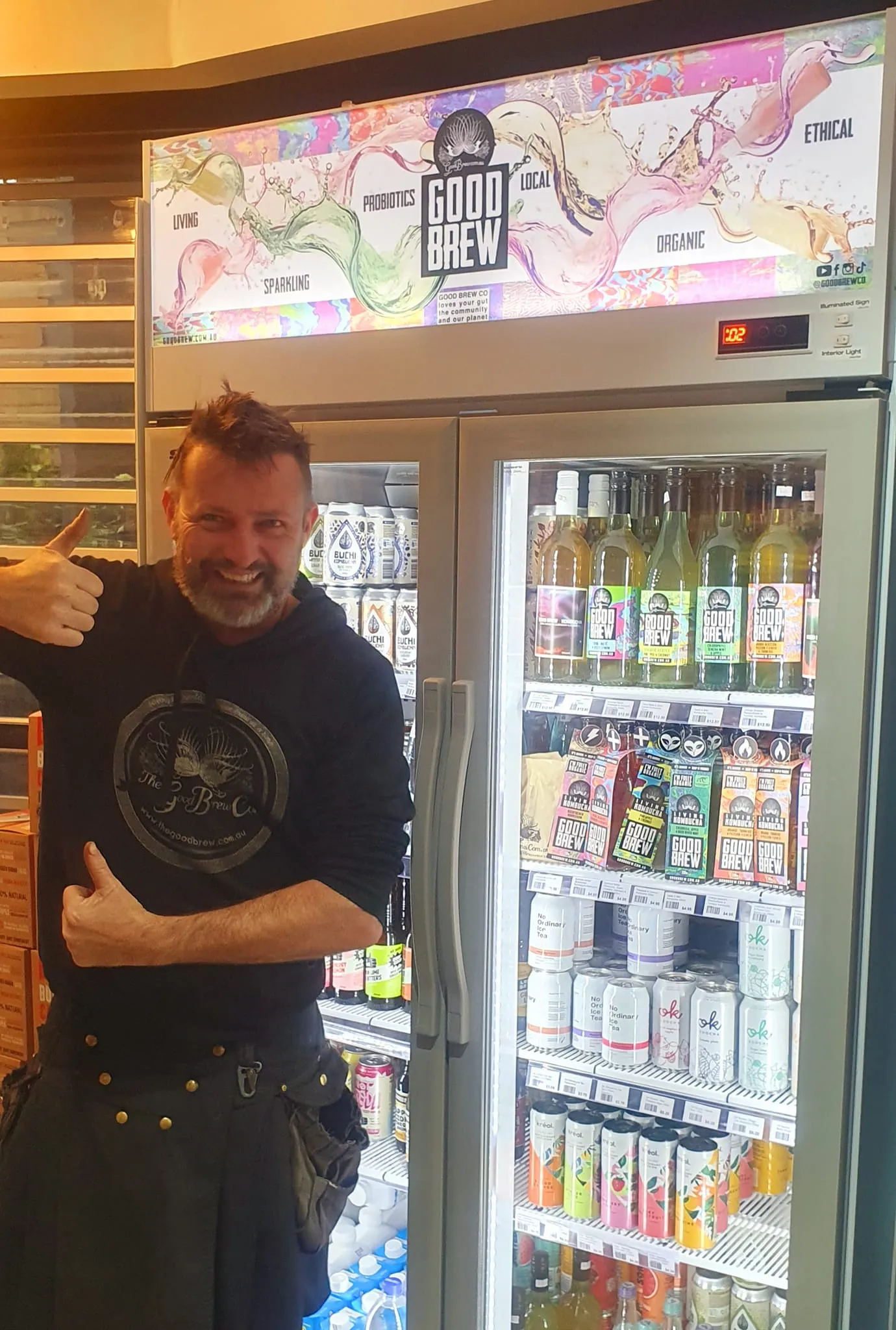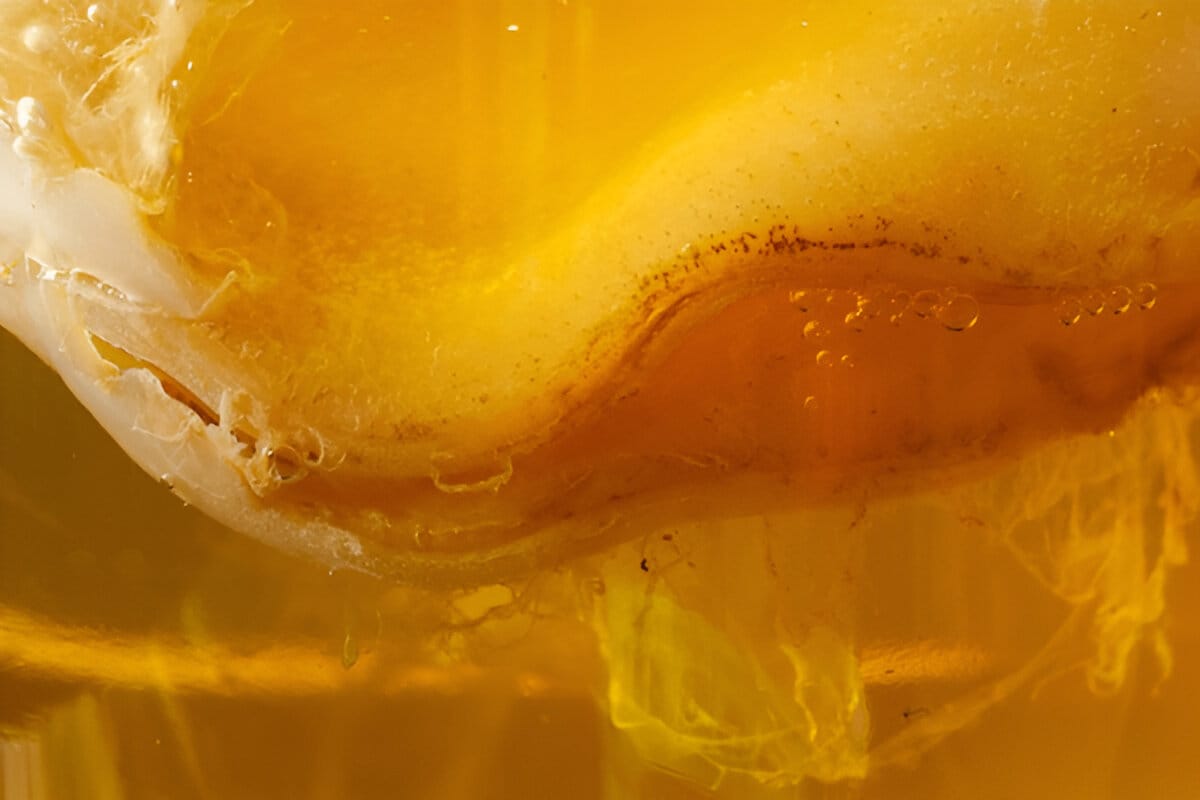
In this guide, we break down what makes kombucha real, why mass production cuts corners, and how to make sure you’re getting the brew your gut actually needs.
What Is Kombucha?
Kombucha is a fermented tea made from brewed tea, sugar, and a SCOBY (Symbiotic Culture of Bacteria and Yeast). Over a 1–4 week fermentation period, the SCOBY consumes the sugar and transforms the tea into a tangy, lightly fizzy drink packed with:
- Live probiotics that support gut health
- Organic acids like acetic and gluconic acid
- Polyphenols from the tea (which fight oxidative stress)
- Natural enzymes and trace vitamins
For a deeper breakdown of how kombucha is made, see our What Is Kombucha guide.

Real vs Supermarket Kombucha: Key Differences
| Feature | Traditional Kombucha (Real) | Mass-Produced / Supermarket Kombucha |
|---|---|---|
| Fermentation Time | 7–30 days, slow brewed | Often accelerated, incomplete |
| Pasteurisation | No (keeps live cultures) | Often pasteurised (kills probiotics) |
| Carbonation | Natural via secondary fermentation | Artificial CO₂ injection |
| Storage | Requires refrigeration | Shelf-stable (often sterile) |
| Probiotic Content | Diverse, active cultures | Minimal or none if pasteurised |
| Sediment / SCOBY Pieces | Present – sign of life | Filtered out |
| Added Sugar / Flavouring | Rare, minimal ingredients | Often added post-fermentation |

Study Spotlight: Kombucha and Probiotic Potency
A peer-reviewed study published in Frontiers in Nutrition found that raw, unpasteurised kombucha contained up to 100 times more viable probiotic organisms than pasteurised versions.
In the same study, supermarket kombucha brands showed significantly reduced microbial diversity, while traditionally brewed kombucha maintained complex probiotic strains beneficial for digestion and immunity.
Why Pasteurised Kombucha Falls Short
But here’s the problem: Heat destroys live probiotics. You’re left with a shelf-stable drink that may taste like kombucha, but no longer delivers its original health benefits.
Even worse, many of these brands still claim probiotic benefits on the label, banking on outdated assumptions or consumer confusion.
How to Spot Real Kombucha in the Wild
It Lives in the Fridge
True kombucha must be refrigerated. If it’s sitting warm on a shelf, assume it’s been heat-treated or filtered.
Look for Sediment or Floaties
That stringy stuff at the bottom? It’s a sign of life — leftover culture and yeast that proves your brew hasn’t been sterilised.
Short, Honest Ingredients
Just tea, sugar (used in fermentation), water, and culture. Maybe a whole fruit or herb. Avoid anything with “natural flavours,” stevia, or preservatives.
Check for These Words
- Raw
- Unpasteurised
- Live cultures
- Bottle-conditioned
If it says “sparkling tea” or “shelf-stable,” it’s not the real thing.
If you’re brewing your own, our How to Make Kombucha guide has everything you need to get started.


The Marketing Problem: Gut Health Claims Without the Gut Benefits
Some brands pasteurise their brew, then add lab-grown probiotics later to justify “live cultures” on the label. But these added strains rarely match the complexity of those developed naturally through fermentation.
Others inject fizz to mimic fermentation and push vague claims like “energising” or “good for your belly,” without backing it up.
The result? Consumer confusion — and a kombucha market that rewards convenience, not quality.
Who Actually Benefits from Real Kombucha?
- People with gut health issues (IBS, bloating, poor digestion)
- Those managing inflammation or metabolic health
- Anyone recovering from antibiotics
- Athletes looking to optimise recovery and nutrient absorption
- Everyday drinkers wanting a soft drink alternative that actually supports wellbeing
Raw kombucha can help improve microbial diversity in the gut, support immune function, and aid digestion — but only if it’s alive.
A Quick Shopper’s Checklist
- Use this 15-second scan next time you’re choosing kombucha:
- Is it in the fridge?
- Does it say “raw” or “unpasteurised”?
- Is there sediment in the bottle?
- Is sugar below 5g per 100ml?
- Are the ingredients short and recognisable?
- Does the label avoid vague claims like “flavoured sparkling tea”?
If it ticks those boxes, you’re likely holding a bottle of the good stuff.

Does pasteurised kombucha still have benefits?
Not really. Pasteurisation kills off most (if not all) of the live cultures. You might get flavour, but not the probiotic effect.
What’s the difference between raw and unpasteurised?
They’re often used interchangeably. Raw typically means it hasn’t been heat-treated — which is what you want in kombucha.
Can I tell it’s real just by taste?
Sometimes. Real kombucha will be tangy, slightly sour, and complex. Overly sweet or syrupy kombucha often means it was sweetened post-fermentation.
Why does real kombucha cost more?
It takes time — often weeks — to brew kombucha properly. Mass-produced versions cut that down to days, but sacrifice the microbial quality in the process.
Why does real kombucha cost more?
It takes time — often weeks — to brew kombucha properly. Mass-produced versions cut that down to days, but sacrifice the microbial quality in the process.
Does Good Brew use pasteurisation?
No. Our kombucha is raw, organic, bottle-conditioned, and cold-kept from start to sip — just as it should be.
Check out our raw, organic kombucha range – made the traditional way with nothing filtered, nothing fake, and no shortcuts. It’s alive, functional, and brewed to support your gut, not just your tastebuds.

 54 Hope St, Brunswick VIC 3056
54 Hope St, Brunswick VIC 3056
